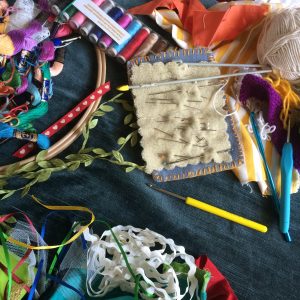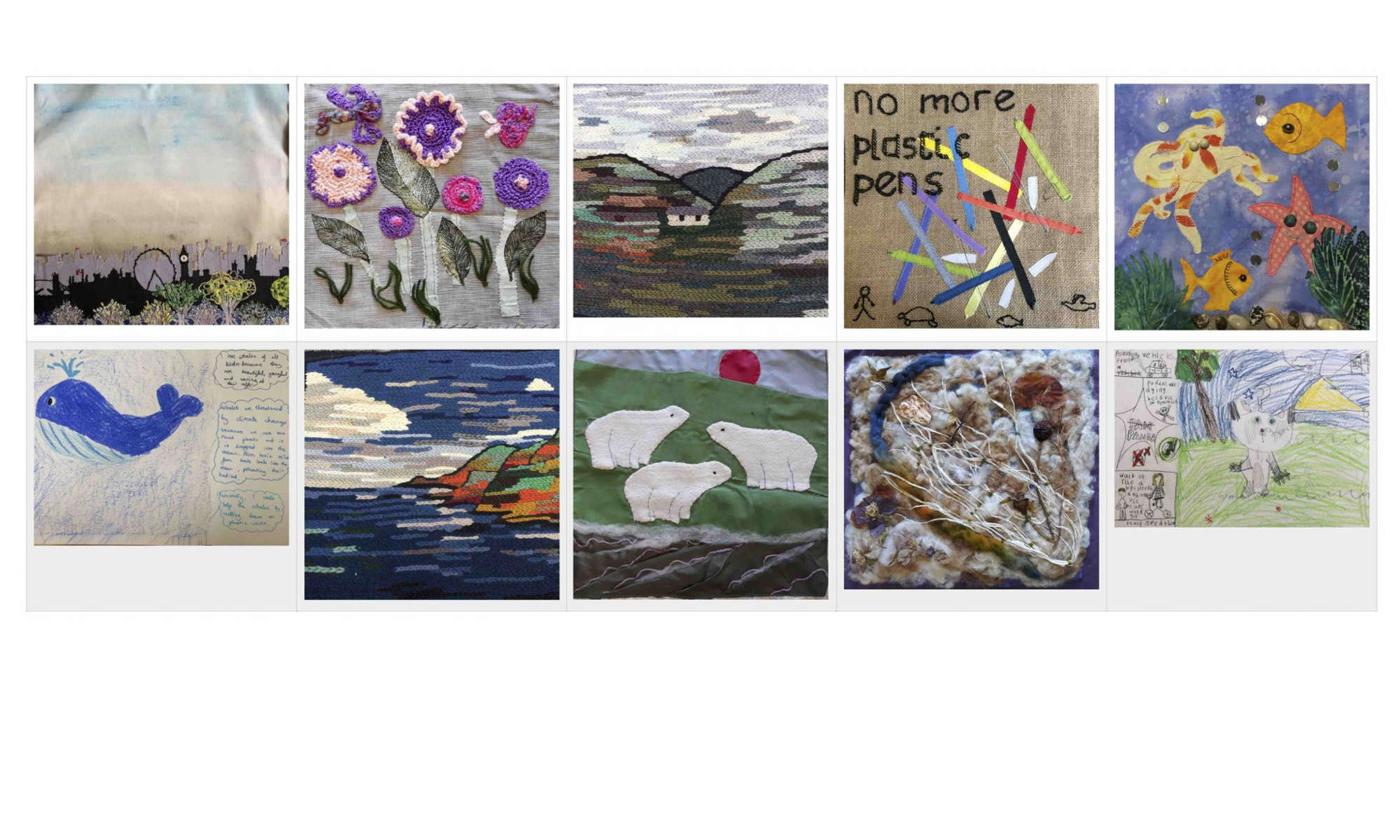You may have your own ideas for making textile panels, but here are some thoughts to get you started. Lottie Percival has also made a series of short videos to help with materials, techniques and inspiration.
Use whatever skills and materials you have. Get out any scraps of fabric, wool, buttons, string, inks, dyes, beads, ribbon, threads etc that you have and see what inspires you. You may have one or two garments that have come to the end of their lives but whose fabric or details inspire you. Or you may want to add to your stock and get together with friends, or look in your local charity shop, or craft shop? Maybe there’s a local craft group you could join?
Base fabric: it’s good to use a woven fabric. Make a square template out of card or paper and draw around it to get the size right . (The weave of the fabric should be parallel with the edges of the square. ) Allow about 3cm around each edge, and when your panel is finished, iron the edges back and stitch them loosely in place. If you use a lightweight fabric or you knit or crochet your panel, you may want to mount it on a heavier fabric, or to line the finished panel.
Fabric collage by using Bondaweb or similar iron-on matches is a good option for those not used to lots of stitching. Iron the Bondaweb to your fabric patch, draw cut out paper and patch together, then remove the paper and stick to the base material using the iron. If you draw your shape onto the paper (at the back of the fabric) it will be a mirror image. A few stitches on top of the collage, by hand, or with a sewing machine, are a good idea too, to secure it further. If using glue, test in advance to see how it behaves with the fabric. It can soak through the fabric, or crack and come apart once dry, and it can be difficult to stitch through.
Alternatively you can embroider, crochet, knit, weave or even paint your fabric. A video about simple potato printing is here. Experiment and have fun! If you are not an experienced sewer you may want to get together with others for company and a helping hand. Do sketch your design on paper first, and test your techniques on scraps of fabric .
It would be helpful but not essential if you could line your panel when it’s finished, so it’s strong and durable for travelling around and being displayed. Try not to make it too thick though.
Sewing is an essential skill for sustainable living, to mend, upcycle or decorate clothes and other textiles. However you can also print on cloth, knit, weave or use other forms of textile.
There are lots of useful books and internet resources if you are a beginner or need inspiration, and don’t forget to look at our RESOURCES PAGE for more guidance and videos.
